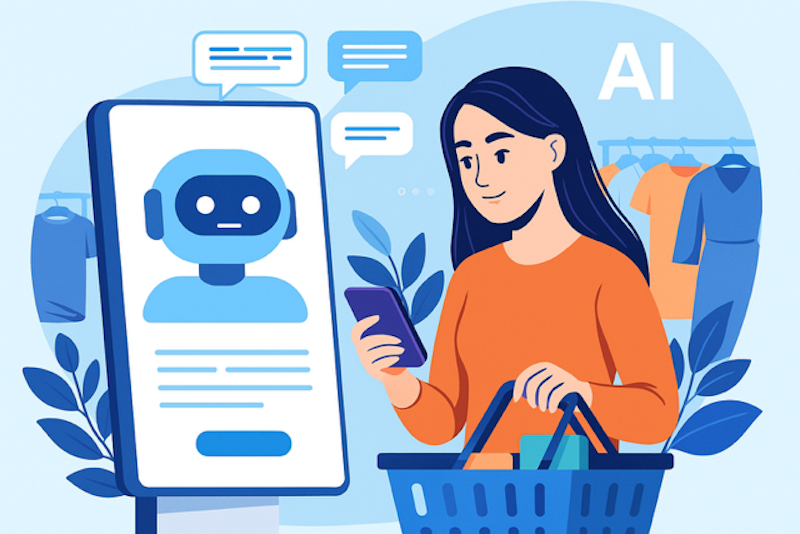How are 2024's digital photography trends changing retail spaces?
In 2024, digital photography reshapes retail spaces in surprising ways. Most of us notice this change as businesses enhance customer experiences. Interactive displays capture attention with personalised product visuals.
Customers, drawn to vibrant imagery, feel more connected to brands. This shift leads retailers to rethink store layouts and marketing strategies. New trends like custom canvas pictures prints for wall art mean opportunities for growth in a rapidly evolving landscape.
Curious how?
Let’s explore how these innovations influence shopping environments and engage our senses today.
Enhancing customer engagement with interactive displays
Retailers in 2024 use interactive displays to revolutionise customer engagement. These displays do more than just showcase products; they invite shoppers to interact with content dynamically.
Retail spaces integrate touchscreens and motion sensors, offering personalised recommendations based on real-time data.
Consider a shopper entering a clothing store: the display detects their presence and suggests outfit combinations tailored to their preferences. This level of personalisation encourages longer visits and increases purchase likelihood.
Such technology enhances brand interaction by allowing customers to visualise products in unique ways. Some stores even incorporate virtual try-ons or customisations directly on these screens, giving an immersive experience without needing assistance from sales staff.
The rise of this trend redefines how consumers perceive and engage with brands physically present in retail locations today.
Personalised visuals: creating emotional connections
Retailers in 2024 focus on personalised visuals to forge deeper emotional connections with customers. Tailoring imagery, they use data driven insights to cater displays directly to individual preferences and needs.
When stepping into a tech store, a customer might notice their preferred gadgets showcased as if just for them. This sense of personalisation draws attention and makes the shopping experience more meaningful.
Behind these engaging visuals lies template designing at its core. The art of creating adaptable templates ensures images resonate personally, while seamlessly blending elements like lighting or colors enhances aesthetic appeal.
Even the background of a photo can tell a story by matching themes relevant to each viewer’s interests. These personal touches elevate customer loyalty, transforming casual shoppers into brand advocates through visual storytelling.
Leveraging augmented reality to elevate consumer engagement
In 2024, augmented reality has become a linchpin in revolutionising retail spaces. AR forges a seamless connection between digital convenience and the tangibility of in-store shopping, crafting captivating engagement opportunities for customers.
● Customers explore products through virtual lenses on their smartphones or AR enabled store displays. Imagine trying on shoes virtually without removing your current pair!
● Furniture stores use AR to allow shoppers to visualise how pieces fit into their homes, adjusting size and color with simple gestures.
● Beauty brands offer digital makeovers, where customers experiment with makeup shades directly from AR mirrors.
These applications foster a deeper connection between brands and shoppers by enabling personalised exploration. Retail spaces evolve as destinations not just for buying but experiencing products first-hand, enhancing satisfaction and boosting brand affinity.
Streamlining store layouts for digital integration
Retailers in 2024 adapt store layouts to seamlessly integrate digital technology, enhancing customer experiences and optimising space. This evolution begins with the strategic placement of interactive displays and augmented reality zones. These features are easily accessible, ensuring smooth navigation.
Imagine walking into a clothing store where traditional aisles transform into open spaces that invite exploration. Displays provide digital guides to the latest trends or showcase curated collections based on popular demand.
Such integration improves flow by removing physical barriers, fostering a more engaging shopping environment. It also supports contactless transactions with strategically placed self-checkout kiosks.
The modern retail layout focuses on blending technology and design thoughtfully, creating environments that cater to digitally savvy shoppers while maintaining an inviting atmosphere.
Embracing the future: retail's new digital era
Retailers in 2024 adapt to a new digital era, reshaping customer experiences through innovative technologies. Interactive displays and augmented reality transform how we shop, offering personalised and immersive journeys.
As store layouts evolve to embrace these changes, retail spaces become vibrant hubs of engagement, setting the stage for future growth and redefining our shopping adventures.































Continue reading…